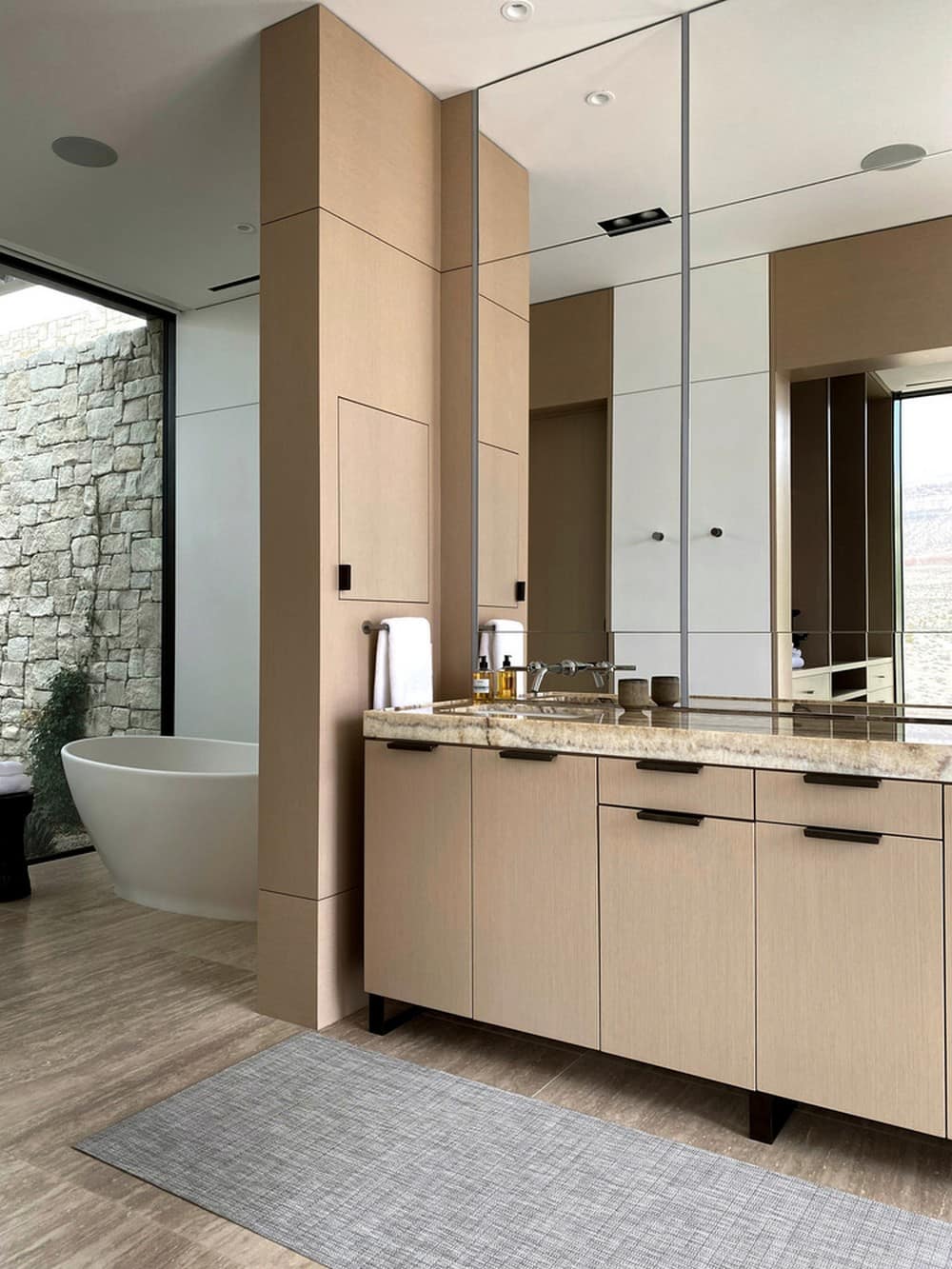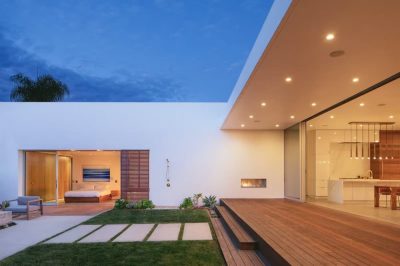
Project: Fort 137 Residence
Architecture: Daniel Joseph Chenin
Location: Las Vegas, Nevada, United States
Year: 2023
Photo Credits: Stetson Ybarra, Daniel Joseph Chenin, Stephen Morgan
Commissioned for a family embracing an active lifestyle of immersive environmental experiences, the firm was tasked with creating a home that would be contemporary and warm, yet seamlessly blended into the rugged beauty of its natural surroundings.
In addition to an interior program that included a primary suite, a secondary suite, three additional bedrooms, and a large communal living and dining space, the 15-month build prioritized an external focus that includes an entry rotunda, a shaded courtyard, and a view frame overlooking the surrounding landscape.

Fort 137’s entry rotunda characterizes the firm’s experiential approach, with a modern interpretation paying homage to the old fort structures of early settlements that once dotted the desert landscape of the Las Vegas Valley. The rotunda, rising 28 feet, serves as a transition between the external desert heat and the cooler interior, with a conical shape that contrasts with the straight lines of the living spaces.
Upon entering the rotunda, the sound of running water from the lower level’s stone fountain transitions mindsets from the arid desert heat to one of a cooling desert mirage, and a winding staircase provides access to a rooftop lounge outfitted with a firepit and expansive desert views.

After a cool respite, the rotunda ushers you back into the desert climate of an internal courtyard that transitions across the blurred lines that blend the home into its surrounding natural environment. The transition from the external desert to the home’s interior begins with a fully-enclosed, shaded courtyard area that is ideal for family meals and gatherings, set against a backdrop that includes a 75-ton boulder that was excavated from the site.

Inside the home, two dually-purposed flanking walls run from north to south, providing protection against external elements, while also defining the boundaries of the layout. Between the walls, gathering spaces include a large lounge area and dining room, a kitchen, an office, and a theater room, while more intimate spaces, including the bedrooms, are located on the outer sides of the walls.

The living spaces of Fort 137 Residence are laid out in three complementary volumes, each designed to maximize comfort, efficiency, and ambiance. Within a steel frame and stone walls, sliding glass panel walls, 38 feet long by 13 feet high, provide panoramic views from both the north and south facades. The glass walls also serve multiple purposes and are positioned to provide cross-ventilation and to draw abundant sunlight into an interior designed with angular precision to offer protection against the harshest occurrences of the desert sun and wind.

The central flow of the interior’s open living and dining area gives way to an adjoining sub-set of more intimate and private zones, including bedrooms and servicing areas. Each space, from its orientation to its comforts, is designed for tranquil moments alone, or for quiet moments spent with guests. The modest luxury of the modern interior is framed by travertine floors, stucco ceilings, and reconstituted wood veneer vertical panels, providing a warm embrace for the curated furnishings and art selections of Daniel Joseph Chenin. Stone, wood, and brass details are abundant, including in the interior’s custom door handles and detailed cabinetry.

In addition to hitting its mark as an integrated oasis of comfort and serenity in the desert valley, Fort 137 Residence was built with limited environmental impacts. Daniel Joseph Chenin incorporated numerous design strategies into the project to offset the home’s carbon footprint and reduce its dependence on the grid, including a photovoltaic panel infrastructure and ballast roofing that complement other design elements along with passive cooling, thermal mass, and radiant heating.

Other sustainable considerations include a reconstituted wood veneer derived from the biproduct and waste of a sawmill, as well as locally-sourced materials, and constructively repurposed rocks and earth extracted from the building site. Furthermore, materials including weathered steel, hot rolled steel, and travertine were procured for their ability to age and patina with the desert sands of time, adding further color and textures to a built environment destined to integrate even deeper into its natural surroundings.



















